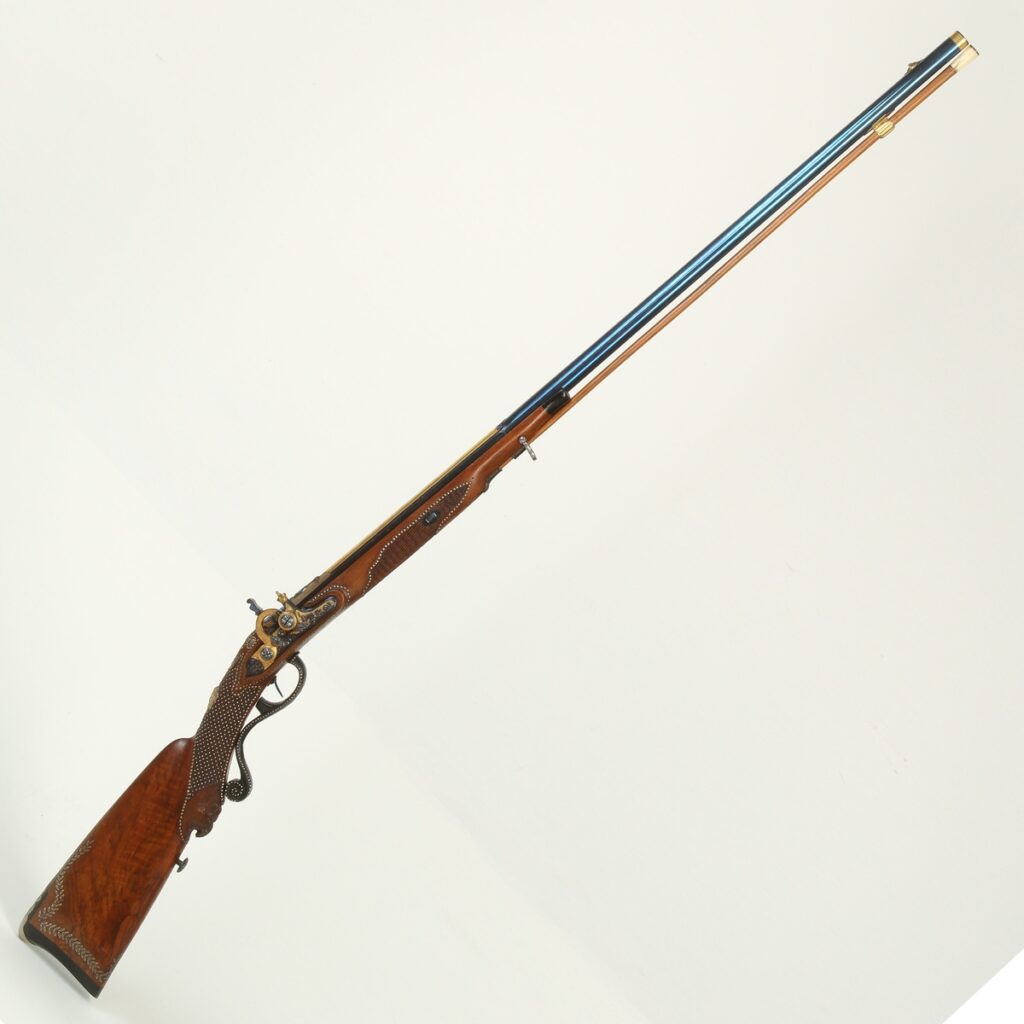
01 Chemical Lock Gun, B. Sailer, Ehingen, c. 1815
Fotogalerie
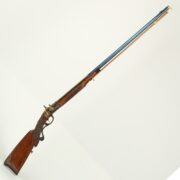
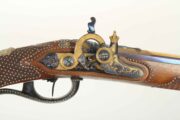

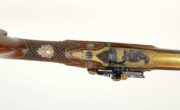
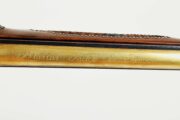
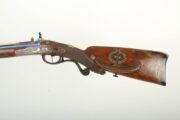


By the end of the 18th century, hunting firearms began to use explosive substances that ignite on impact. Attempts to replace the gunpowder in the barrel, the burning of which set the projectile in motion, failed but it turned out that the gunpowder could replace the powder in the pan used to ignite the gunpowder in the barrel.
Scottish clergyman Alexander John Forsyth (1768–1843) experimented with explosives beginning in 1793. He constructed the first lock with an explosive container in 1805, and two years later obtained a British patent for his design, in which the explosive was contained in a revolving cylinder. This was followed by other variations of chemical locks, as the designs preceding the percussion system are called.
The gun displayed here is a luxurious weapon made by a top and technically very skilled and inventive German gunsmith, who produced weapons for the royal court of Württemberg and most probably for other important German personalities in the late 18th and the first quarter of the 19th century. Blasius Sailer, who did not shy away from unusual solutions, was most likely the personal gunsmith of Duke Karl Henry of Württemberg (1772−1833). In Sailer, the duke, who had interesting ideas on how to improve weapons, acquired a gunsmith who was able to implement his ideas and probably further enrich them with his own.
The barrel of this shotgun has a circular cross-section in the front part and is shiny blue on this part. The rear third of the barrel has flats on the sides and is rounded at the top. The bore of the barrel is smooth. The rear third of the barrel length is divided into two parts. The more forward part has a smooth, fully gilded surface, engraved with the signature “Blasius Sailer in Ehingen”. The very back of the barrel bears the dominant motif of the decoration: a relief-carved bird of prey perched on the stump of a tree. This figure and the tree are blue, the ground beneath the carving is roughened and gilded. A similar technique was used to decorate the deadbolt of the bottom screw, where a shell motif is found. The shell is brass, gilded in fire. It is in the form of a mascaron, with the nose of the mascaron forming the sight itself.
The gun is equipped with a chemical lock, which is richly decorated. The decoration combines carvings with gilding and bluing. Hunting motifs predominate here. Only the front part of the lock plate bears a mascaron. On the lock plate, the lower part of the cock and the spring cover bear the motif of a boar’s head, a hunting dog and a hare in the landscape. The cover of the explosive cartridge has the form of a royal crown. In the place of the sideplate are two flats of bright metal with the inscription “Herzog Christof”. An oval medallion with a portrait of a man in Renaissance clothing is inserted between the two plates.
The weapon is half-stock and the stock is made of high quality, probably walnut wood. The surface of the wood is glossy and the decoration shows embedded decorative areas of dark wood, which can be found on the fore-arm and cheekpiece. There are also bands of silver studs which were used to line or complement the herringbone. A band of fine studs can also be seen along the circumference of the trigger guard, which, like the buttplate, is made of dark wood. Laurel leaves predominate here, most of which are on the buttplate.
There is a silver mascaron on the grip of the stock and two more small mascarons on the sides of the deadbolt of the bottom screw. The last, beautifully cut mascaron ends with a long stock grip. The buttplate is fitted with a cheekpiece.
Length 1,300 mm, barrel length 940 mm, calibre 14 mm.
Aktuálně
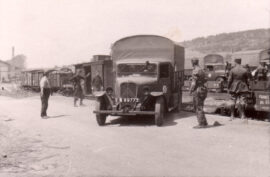
Oceňovaní spojenci - Pozemní útvary československé branné moci v bitvě o Francii očima francouzského velení

Vánoce a přelom roku v zahraniční misi na Slovensku v roce 2022

Prosinec 1944 – oficiální vydání prvních poštovních známek osvobozeného Československa









